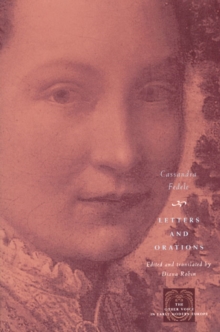
Jewish Poet and Intellectual in Seventeenth-Century Venice : The Works of Sarra Copia Sulam in Verse and Prose Along with Writings of Her Contemporaries in Her Praise, Condemnation, or Defense PDF
by Sulam Sarra Copia Sulam
Part of the The Other Voice in Early Modern Europe series
Description
The first Jewish woman to leave her mark as a writer and intellectual, Sarra Copia Sulam (1600?–41) was doubly tainted in the eyes of early modern society by her religion and her gender. This remarkable woman, who until now has been relatively neglected by modern scholarship, was a unique figure in Italian cultural life, opening her home, in the Venetian ghetto, to Jews and Christians alike as a literary salon.
For this bilingual edition, Don Harrán has collected all of Sulam’s previously scattered writings—letters, sonnets, a Manifesto—into a single volume. Harrán has also assembled all extant correspondence and poetry that was addressed to Sulam, as well as all known contemporary references to her, making them available to Anglophone readers for the first time. Featuring rich biographical and historical notes that place Sulam in her cultural context, this volume will provide readers with insight into the thought and creativity of a woman who dared to express herself in the male-dominated, overwhelmingly Catholic Venice of her time.
Information
-
Download - Immediately Available
- Format:PDF
- Pages:632 pages
- Publisher:University of Chicago Press
- Publication Date:15/11/2009
- Category:
- ISBN:9780226779874
Information
-
Download - Immediately Available
- Format:PDF
- Pages:632 pages
- Publisher:University of Chicago Press
- Publication Date:15/11/2009
- Category:
- ISBN:9780226779874










